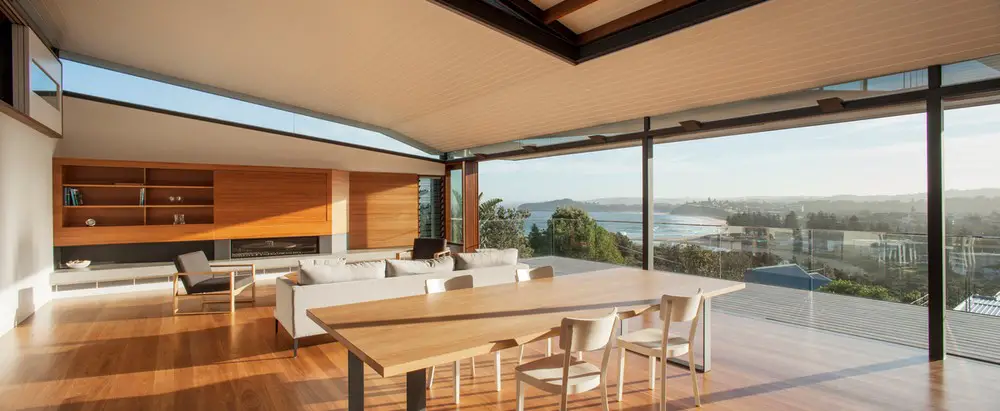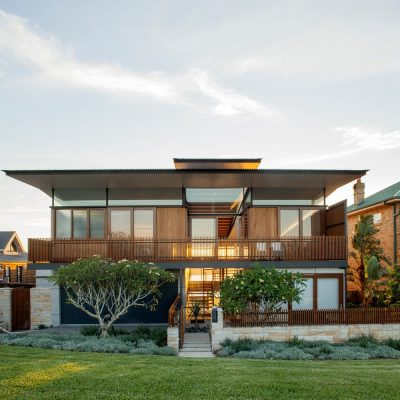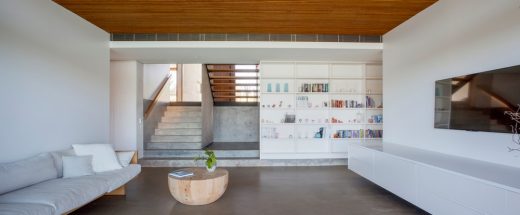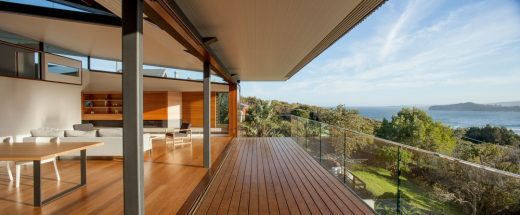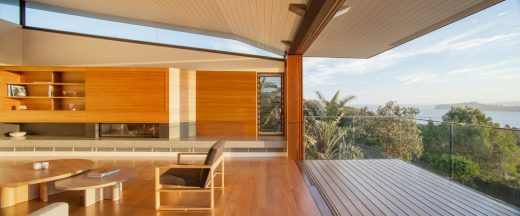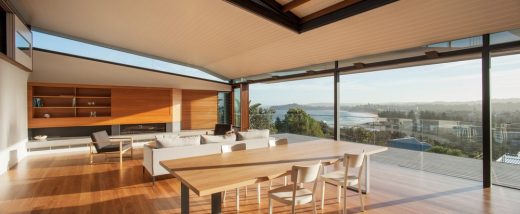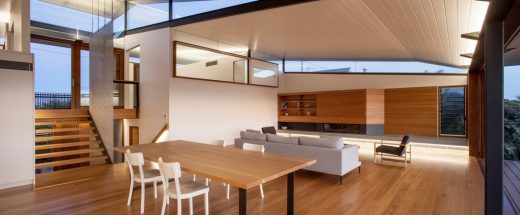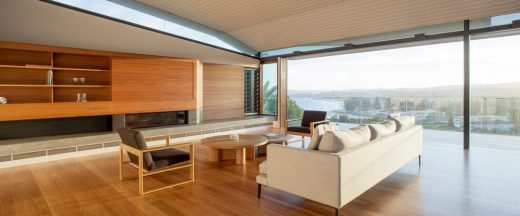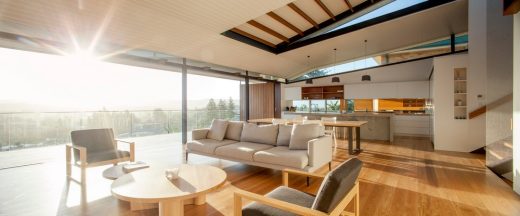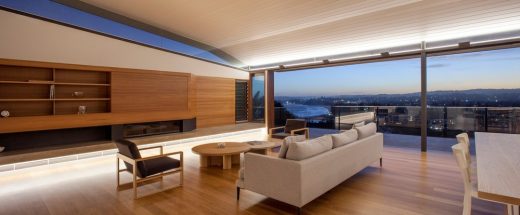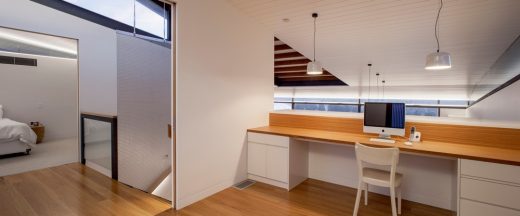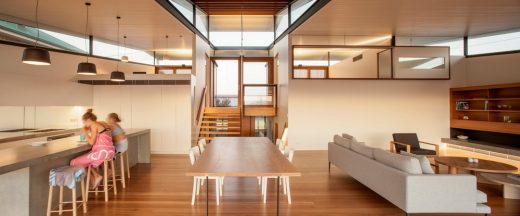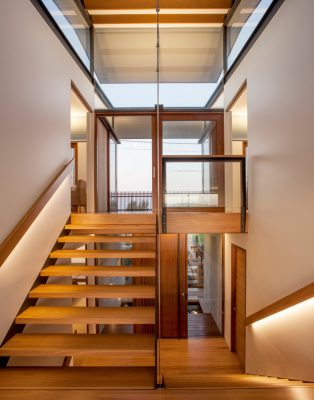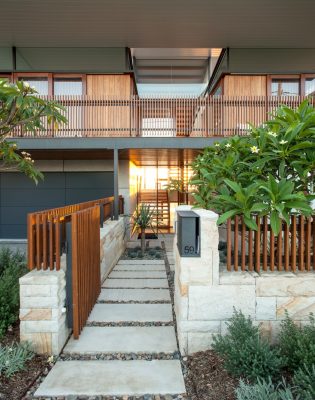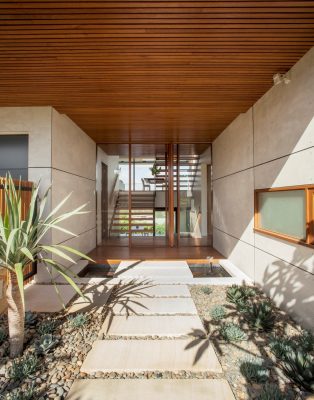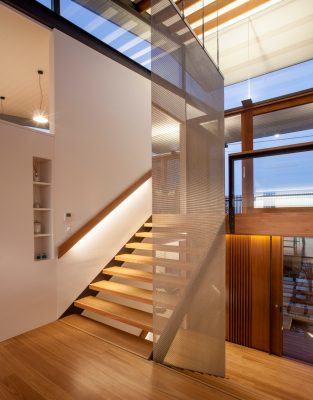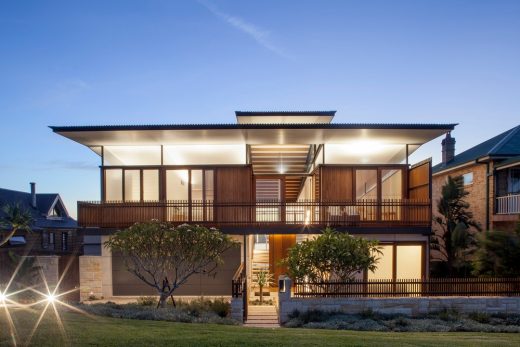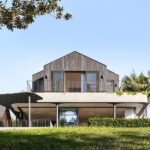Headland House, New South Wales Redence, Mona Vale Real Estate, Modern Villa, Architecture Images
Headland House in Mona Vale NSW
20 Oct 2022
Architects: Richard Cole Architecture
Location: cliffs of Mona Vale Headland, New South Wales (NSW), Australia
Photos: Simon Wood Photography
Headland House, Australia
Headland House stands on the shale cliffs of Mona Vale Headland. The site and headland slope away to the Southwest, to the swell formed hollow of Basin Beach. On such an exposed promontory shelter is vital. Evoking the act of setting up on the beach, with just a spread of towels to define the temporary boundaries of place and an umbrella as shading canopy, the design seeks to provide shelter lightly: a relaxed, pellucid enclosure.
Responding to both outlook and exposure, the boundary wall contained plan and low slung split floor section carefully respond to the difficult South-Western orientation and topography. The angled and tapered roof scoops northern light deep into the building through the anchor of the central staircase and deflects the north-easterlies that wrap over the cliffs throughout Summer. The pervading openness and transparency ensures a proximity and connection with the landscape.
What is the conceptual framework of the project?
Headland House stands on the north east facing shale cliffs of Mona Vale Headland. The site and headland slope away to the south-west, to the swell formed hollow of Basin Beach. A narrow cul-de-sac separates the house from the cliffs, at the end of which is a popular public reserve. On such an exposed promontory shelter is vital. Evoking the act of setting up on the beach, with just a spread of towels to define the temporary boundaries of place and an umbrella as shading canopy, the design seeks to explore containment and provide shelter lightly: a relaxed, pellucid enclosure.
The warm, articulated character of the dwelling is carefully composed by the clarity of detailing, a palette of tactile natural materials and the wilful manipulation of light. The character of the house reads as a crafted container within the streetscape, inviting further investigation. Generous side setbacks provide public vistas to views of the Basin from the street, frequented by walkers heading to the reserve. Environmental strategies include a form derived from climatic and solar passive principles, carefully positioned window, door and screen systems providing user operability of light and cross ventilation, solar and water harvesting and low energy systems throughout.
What contribution does the design make to the lives of the inhabitants?
The client was extensively engaged with the design process, a collaborative approach which ensured an outcome where the client, through continued personal investment, achieved a deep sense of ownership of the completed building. The building aspires to beauty, openness and place making to provide a vessel in which a family can grow. It is a dwelling where the inhabitants can feel at home, interact as a family, engage with the view and streetscape, and yet not feel exposed. By means of the central stairwell and split levels, daylight is invited into the central places of gathering.
What is the relationship of the built form to the context of the project?
Responding to both outlook and exposure, the boundary wall contained plan and low slung split floor section carefully respond to the difficult South-Western orientation and topography. The angled, tapered roof scoops Northern light deep into the building through the anchor of the central staircase and deflects the north-easterlies that wrap over the cliffs throughout summer. The layered form of local sandstone, fibre cement sheet, steel and glass, overlaid by white mahogany timber detailing, is framed by side walls and opens to ocean vistas on the south-west and north-east. The roof sits lightly, providing transparency and accentuating the topography.
Openness, lightness and transparency are core characteristics of the design, achieved by means of a site welded steel frame. Site welding provided fixed joints, eliminating the need for extensive and intrusive bracing. Crisp, tectonic steel detailing was carried through to the internal and external balustrades. The canopy roof, which floats lightly above walls of the house, was only possible using a steel structure. The extreme exposure of the site, located on headland cliffs, within 50 metres of breaking surf, provided challenges to the durability of any material. This issue was addressed by use of an industrial coating system typically used for the protection of steel in aggressive environments such as wharf super-structures and ship loaders, bridges. The adaptability and strength of steel made it the appropriate material to achieve the design intent.
How does the functional performance of the design respond to the clients brief?
The brief sought a modern timber beach house, elegant and simple, capturing the views, integrating with the garden and providing a sense of connection between levels. The split-level plan takes advantage of the topography to provide expansive views to the North and South, while retaining connection between levels and the garden. Slide away banks of glazed doors and timber screens provide owner operability. The house has a simple street presence with a carefully proportioned façade that is compatible in scale and form to neighbouring dwellings. The pervading openness and transparency ensures a proximity and connection with the landscape.
How have other, allied disciplines helped to achieve the project outcome?
The house is a testament to the dedicated craftsmen who built it. The design called for minimal tolerances, requiring a high level of skill, craftsmanship and cooperation between trades. An elemental, coastal garden that is integral to the architecture will increasingly complement the design as it matures.
Headland House in Mona Vale, New South Wales – Building Information
Architect: Richard Cole Architecture – https://richardcolearchitecture.com.au/
Project size: 310 sqm
Site size: 713 sqm
Completion date: 2016
Building levels: 2
Builder: JJ Building Company
Landscape Architect: Outdoor Establishments
Photographer: Simon Wood Photography
Headland House, Mona Vale NSW images / information received 201022
Location: Mona Vale, NSW, Australia
New Architecture in Sydney
Contemporary Sydney Buildings
Sydney Architectural Designs – chronological list
Oystercatcher House, Callala Beach, New South Wales
Design: MCK Architecture & Interiors
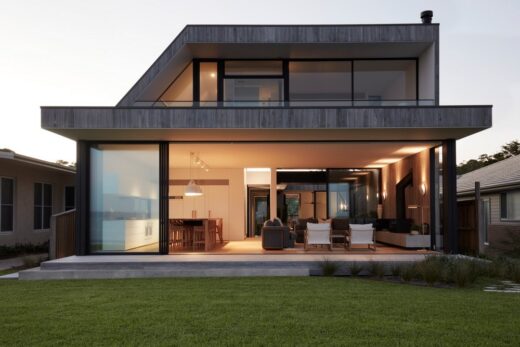
photo : Prue Ruscoe
Oystercatcher House, Callala Beach, NSW
Pepper Tree Passive House, Illawarra region, New South Wales, Australia
Design: Alexander Symes Architect
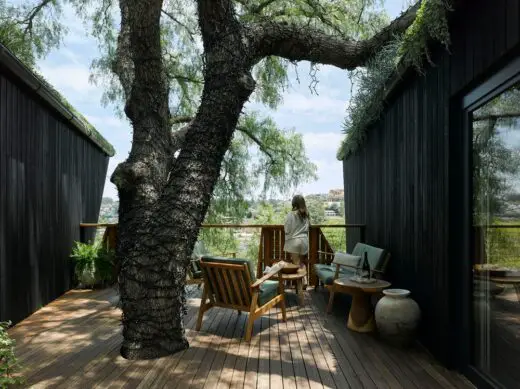
photo : Barton Taylor
Pepper Tree Passive House, New South Wales
Sydney Architecture Walking Tours by e-architect
New Emanuel Synagogue, Woollahra, NSW
Architects: Lippmann Partnership
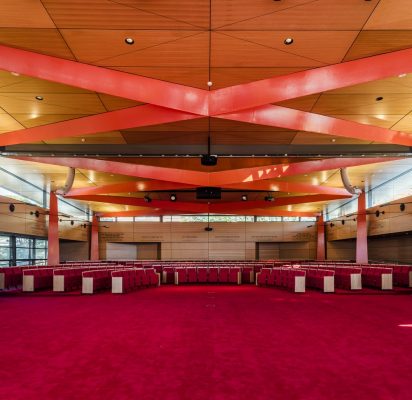
photograph : Willem Rethmeier
New Emanuel Synagogue Building
Rozelle Mixed Use Development – Balmain Leagues Club
Architects: Scott Carver
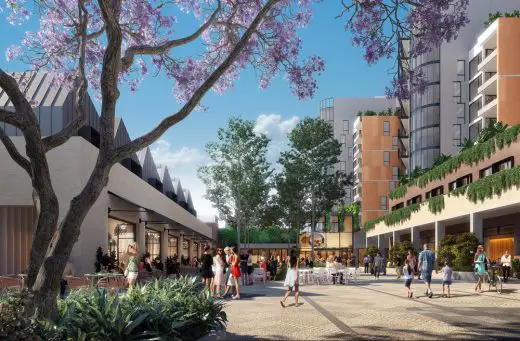
image © Scott Carver
Rozelle Mixed Use Development
NSW Architecture
Harbord Diggers Redevelopment
Architects: architectus, CHROFI and JMD design
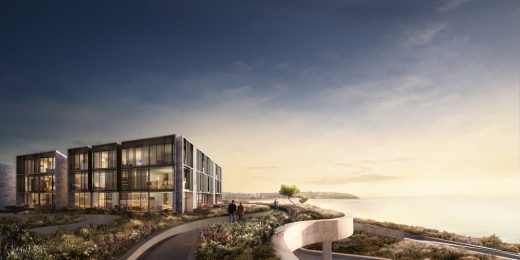
image © Bloom Images
Harbord Diggers Club Redevelopment
Kensington Street, former Carlton & United Breweries site, Chippendale
Landscape Architects: Turf Design Studio
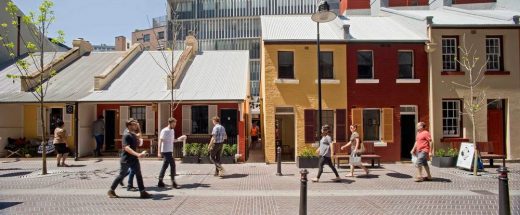
photo : Simon Wood
Kensington Street Development
Comments / photos for the Headland House, Mona Vale NSW designed by Richard Cole Architecture page welcome

